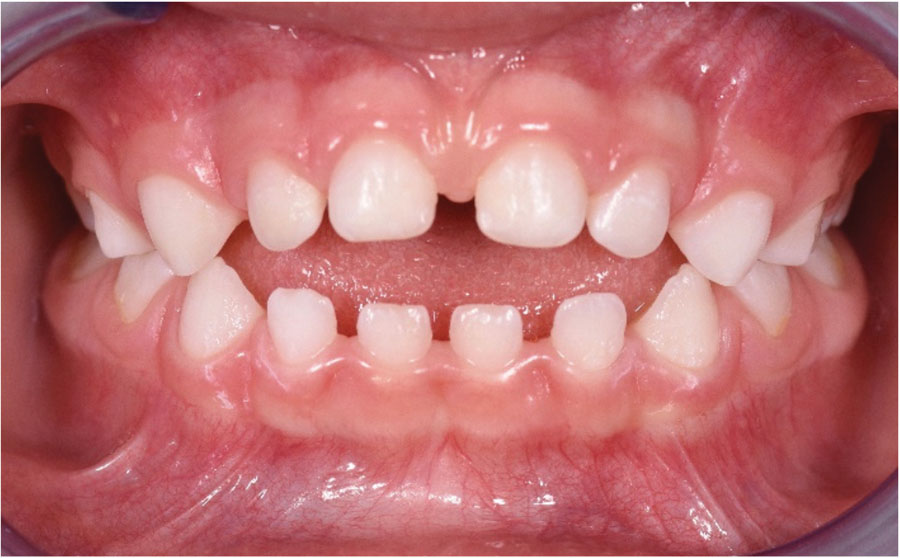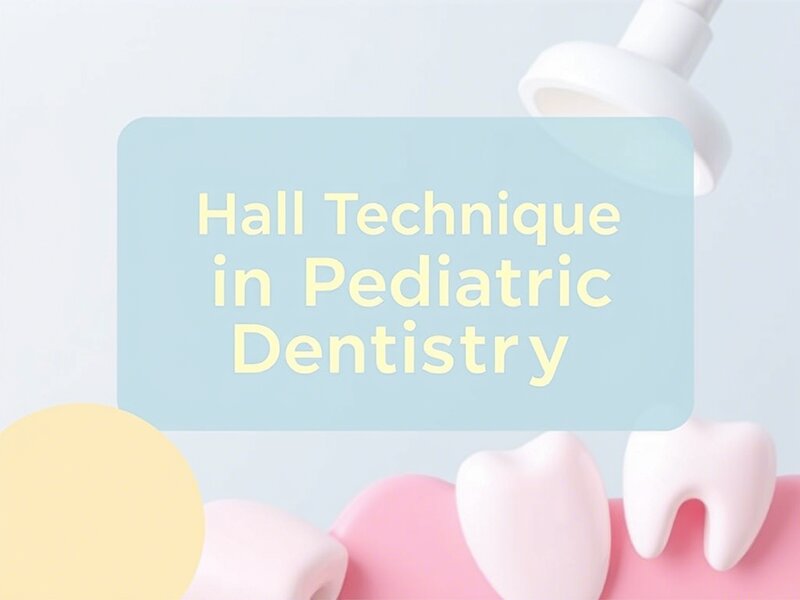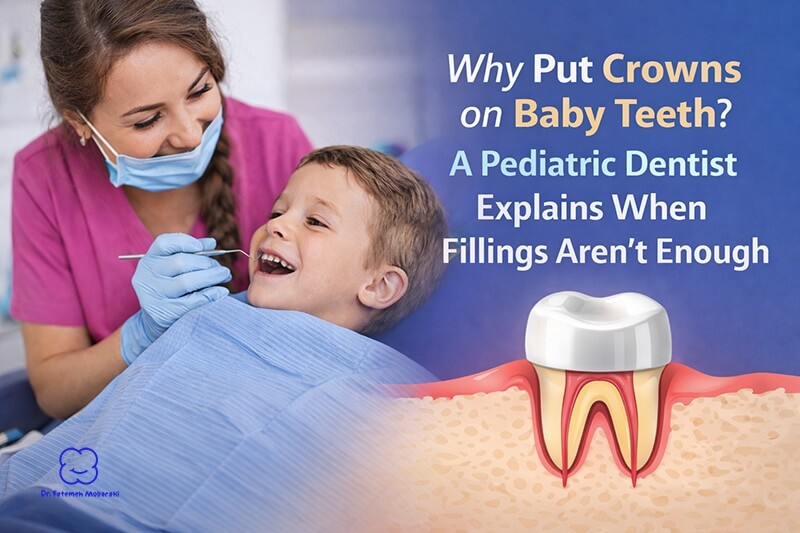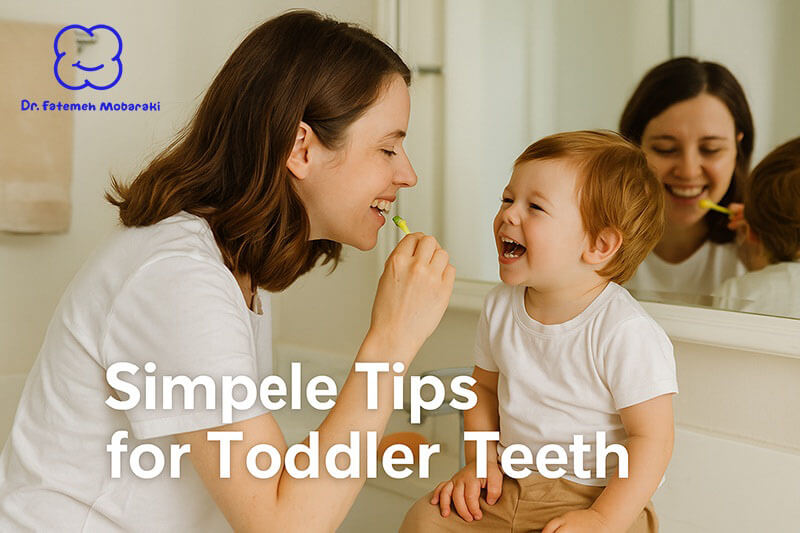As parents, we want our kids to grow up healthy, confident, and happy — and that includes flashing a big, bright smile. But we also know how quickly a small cavity can turn into a bigger problem. That’s why preventive dental care matters so much. Two of the most trusted ways dentists protect children’s teeth are dental sealants and fluoride treatments.
You may have heard these terms during your child’s dental visits and wondered: In the debate of dental sealants vs fluoride, which is better? The truth is, they’re not rivals — they’re partners. And together, they can give your child the best shot at staying cavity-free.
Why Preventive Care is So Important for Kids
When it comes to children’s teeth, the best treatment is the one you never need to have. Preventive dental care is all about stopping problems before they start — protecting teeth now so your child avoids pain, anxiety, and complex treatments later.
The Benefits:
- Avoiding discomfort: Toothaches in children can be incredibly painful, and for kids, even a small cavity can cause big distress.
- Saving time and money: Treating a cavity means fillings, possible general anesthesia, and follow-up visits. Prevention costs far less and takes much less time.
- Protecting confidence: Healthy teeth mean your child can eat, speak, and smile without worry.
- Supporting overall health: Poor oral health in children has been linked to speech delays, difficulty eating a balanced diet, and even missed school days due to pain or dental visits. In severe cases, untreated infections can spread and affect the whole body.
Core Practices in Preventive Care:
Preventive care isn’t just one thing — it’s a combination of small, consistent habits and smart, timely treatments:
- Regular check-ups: Every 6 months (or more often if recommended).
- Daily brushing and flossing: Twice-daily brushing with fluoride toothpaste, plus flossing once teeth touch side-to-side.
- Balanced diet: Limiting sugary snacks and drinks, offering water between meals, and encouraging tooth-friendly foods like cheese, nuts, and crunchy vegetables.
- Protective treatments: Sealants and fluoride varnish — the dental “superheroes” that we’ll explain in detail below.
- Parental role modelling: Kids mimic what they see. If they watch you brushing, flossing, and going for check-ups, they’ll see dental care as normal and important.
Why Childhood Oral Health Is Special:
Children’s teeth — both baby and permanent — have thinner enamel than adult teeth, which means decay can spread faster. Baby teeth also play a big role in guiding permanent teeth into place, helping with speech development, and maintaining the shape of the jaw. Losing them too early to decay can cause crowding and bite issues later.
And it’s not just about the mouth. Research shows that dental pain and infection in kids can lead to:
- Difficulty concentrating in school
- Lower academic performance
- Nutritional problems if chewing is painful
The bottom line? Good preventive care is about more than avoiding fillings — it’s about giving your child the best start in life, with a healthy, confident smile.
What Exactly is Fluoride (and Why It’s a Big Deal)
Fluoride is a naturally occurring mineral found in water, soil, and certain foods. But when it comes to teeth, it’s a superhero mineral — it strengthens enamel, repairs tiny areas of weakness, and makes it harder for cavity-causing bacteria to do damage.
Here’s how it works:
When your child eats or drinks sugary or starchy foods, bacteria in plaque release acids. Those acids start to break down tooth enamel in a process called demineralization. Fluoride steps in to reverse early damage through remineralization, putting important minerals back into the enamel and making it stronger than before.
The benefits are proven:
- Fluoride varnish can reduce cavities in baby teeth by around 37% and in permanent teeth by around 43%.
- It works on all tooth surfaces — not just the tops of molars.
- It helps stop early decay before it turns into a cavity that needs drilling.
How often?
- High cavity risk: Every 3 months
- Average risk: Every 6 months
At home, daily brushing with fluoride toothpaste is a must. For under-3s, use a smear (rice-sized amount). For ages 3–6, use a pea-sized amount. Always supervise brushing so they spit instead of swallow.
Read more: Importance of Fluoride Treatments for Kids
What are Dental Sealants?
If fluoride is a mineral shield, sealants are like putting a raincoat over the tooth.
Sealants are thin, protective coatings painted into the grooves of molars and sometimes premolars. These grooves are where about 9 in 10 cavities in children happen. Once sealed, food and bacteria can’t get trapped, and brushing becomes much more effective.
It’s painless, quick, and there’s no need for numbing injections. Sealants can last 4–10 years and be repaired easily if a part wears away.
Read more: Benefits of Dental Sealants for Children
Dental Sealants vs Fluoride: The Key Differences
- Sealants protect the chewing surfaces of back teeth by sealing grooves shut.
- Fluoride protects all surfaces by making enamel stronger and repairing early damage.
Sealants close the door on cavities in molars. Fluoride makes the whole house stronger. Together, they’re a powerful team.
The Best Ages for Sealants and Fluoride
- First dental visit: By age 1 or within 6 months of the first tooth.
- Fluoride varnish: As soon as teeth erupt.
- First sealants: Around age 6–7 when first permanent molars arrive.
- Second sealants: Around age 12–13 when second permanent molars arrive.
Some high-risk children may benefit from sealants on baby molars too.
Why Dental Sealants and Fluoride Are Extra Important for Kids in Dubai
With many children in Dubai enjoying sweet drinks, dates, pastries, and fruit juices — and often drinking bottled water without fluoride — prevention becomes even more essential. At our pediatric dental clinic in Jumeirah, kids who get both sealants and fluoride consistently have far fewer cavities.
Myths Parents Often Hear (and the Real Facts)
Myth: “Fluoride is dangerous.”
Fact: Used correctly, it’s safe and highly effective.
Myth: “Sealants have harmful BPA.”
Fact: Levels are extremely low, disappear after placement, and are far below everyday exposures.
Myth: “If my child brushes well, they don’t need these.”
Fact: Brushing alone can’t clean deep molar grooves, and fluoride alone can’t seal them shut.
Building Strong Habits at Home (and in the Dental Chair)
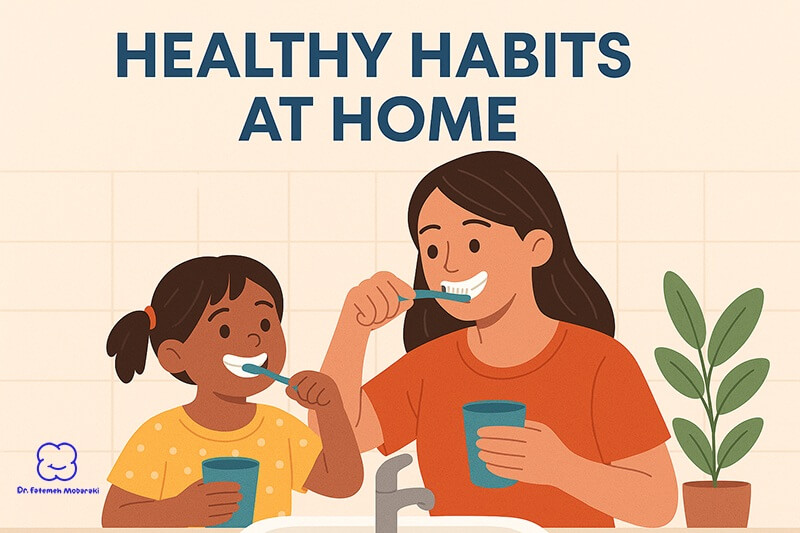
Even the best preventive treatments — sealants and fluoride — work best when your child’s everyday habits are on track. Here’s what really makes a difference:
Brushing twice a day:
Use a fluoride toothpaste and the right amount for your child’s age. Morning and bedtime are non-negotiable. At night, brush after the last meal or snack so teeth stay clean while they sleep.
Flossing daily:
Once two teeth touch, flossing is a must. It removes plaque where toothbrushes can’t reach — especially between molars.
Balanced diet:
Keep sugary snacks and drinks as occasional treats, ideally with meals. Water should be the go-to drink between meals. Foods like cheese, nuts, carrots, and apples can help neutralise acids and stimulate saliva.
Professional cleaning:
At your child’s check-up, the dentist or hygienist removes any plaque and hardened tartar. This keeps gums healthy and gives fluoride and sealants the best chance to protect
Spotting early signs of decay:
Parents are often the first to notice changes. Watch for
- White spots on enamel (early demineralisation)
- Light brown marks or pits on teeth
- Sensitivity when eating sweet or cold foods
- Bad breath that doesn’t improve with brushing
If you see any of these, book a dental visit right away — early care is simpler, faster, and much more comfortable for kids.
Helping Your Child Feel Comfortable at the Dentist
A big part of preventive care is making sure your child enjoys coming to the dentist. Positive experiences now can shape how they feel about dental visits for life.
1. Start with casual visits:
Let the first visit be just a check-up, a friendly chat, and a tour — no pressure for treatment.
2. Talk positively beforehand:
Avoid words like “pain” or “hurt.” Say things like, “The dentist will count your teeth” or “help your smile stay shiny.”
3. Arrive early:
Give them time to settle in, explore the waiting area, and relax before the appointment starts.
4. Choose a kid-friendly clinic:
A colorful space with a play area helps children feel comfortable.
5. Role play and videos:
Watch cheerful, non-scary YouTube videos of kids at the dentist. Or play “dentist” at home with a stuffed toy.
6. Let the dentist set the pace:
If your child is nervous, it’s okay to wait on treatment until trust is built.
7. Stay calm:
Children mirror your emotions — if you’re relaxed, they’ll feel safer too.
How to Make Treatments Last
- Brush twice daily with fluoride toothpaste.
- Floss once a day.
- Limit sugary snacks and drinks to mealtimes.
- Keep up 6-month check-ups to check sealants and top up fluoride.
The Takeaway for Parents
When it comes to dental sealants vs fluoride, it’s not about picking one — it’s about combining them for maximum protection. Together, they can dramatically cut your child’s risk of cavities and keep their smile healthy for life.
Ready to Protect Your Child’s Smile?
At Dr. Fatemeh Mobaraki’s Pediatric Dental Clinic in Dubai, we make preventive care easy, comfortable, and fun for kids. Whether it’s time for your child’s first sealants, their next fluoride varnish, or just a friendly check-up, we’ll guide you every step of the way.
Book your appointment today and give your child the gift of a lifetime — a healthy, happy smile.




